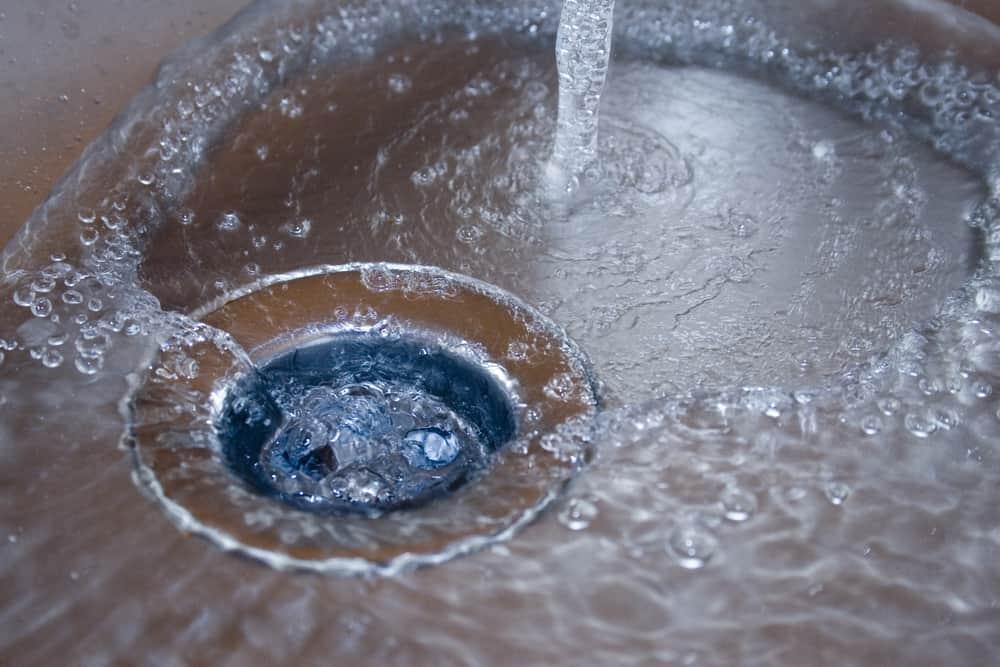
After using the kitchen sink, you may discover that it refuses to drain.
You are watching: Kitchen Sink Won’t Drain, Not Clogged (7 Possible Reasons)
There’s nothing clogging the pipe.
Why isn’t the kitchen sink draining?
We found seven reasons your kitchen sink won’t drain, and we offer some tips to fix the problem.
Kitchen Sink Won’t Drain, Not Clogged (7 Possible Reasons)
1. Sludge Buildup
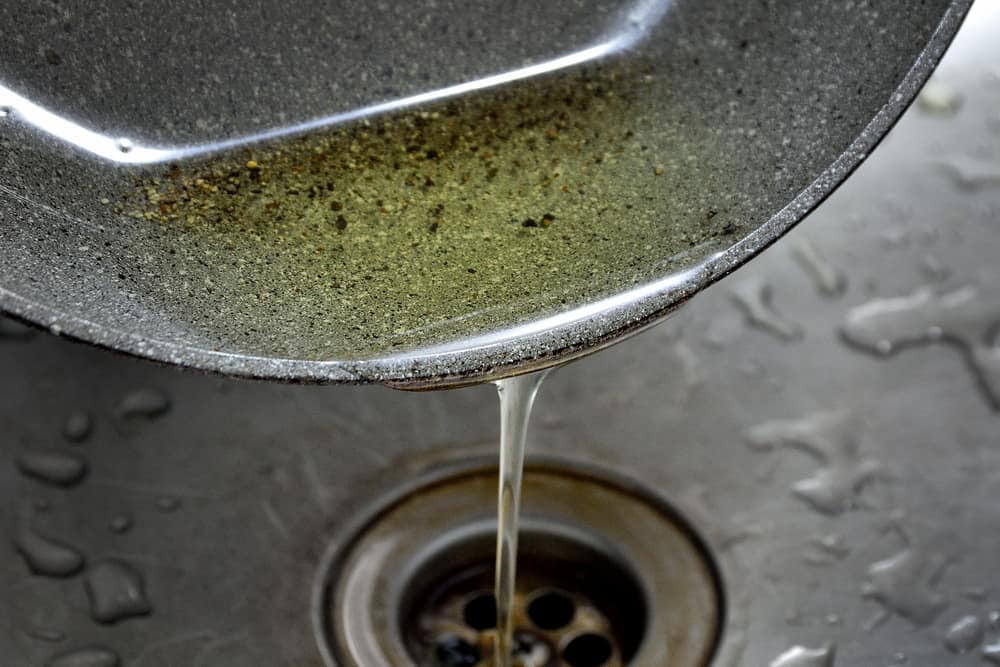
A common mistake that homeowners make is dumping grease, oil, and fats down the drain.
It may seem harmless, but this actually damages your plumbing.
Grease, oil, and fats turn into a sludge that sticks to the pipe’s walls.
As it mixes with water, especially if the water has minerals in it, the sludge thickens.
Eventually, the water can’t pass through the drain.
There are a few ways you can keep sludge from forming in your pipes.
The easiest is to pour grease, oil, and fats in the trash rather than down the drain.
Another is to use a sink stopper.
Some stoppers come with a cage on the bottom that traps hair and other solids.
It can also be useful for limiting how much sludge enters the pipe.
Examining the stopper can also tell you if sludge exists in the pipe.
The stopper will have sludge on it, too.
There are also pipe-safe biodegradable cleaners that can eat away at the sludge over time.
Once the buildup is gone, the kitchen sink will drain again.
2. Chemical Or Soap Buildup
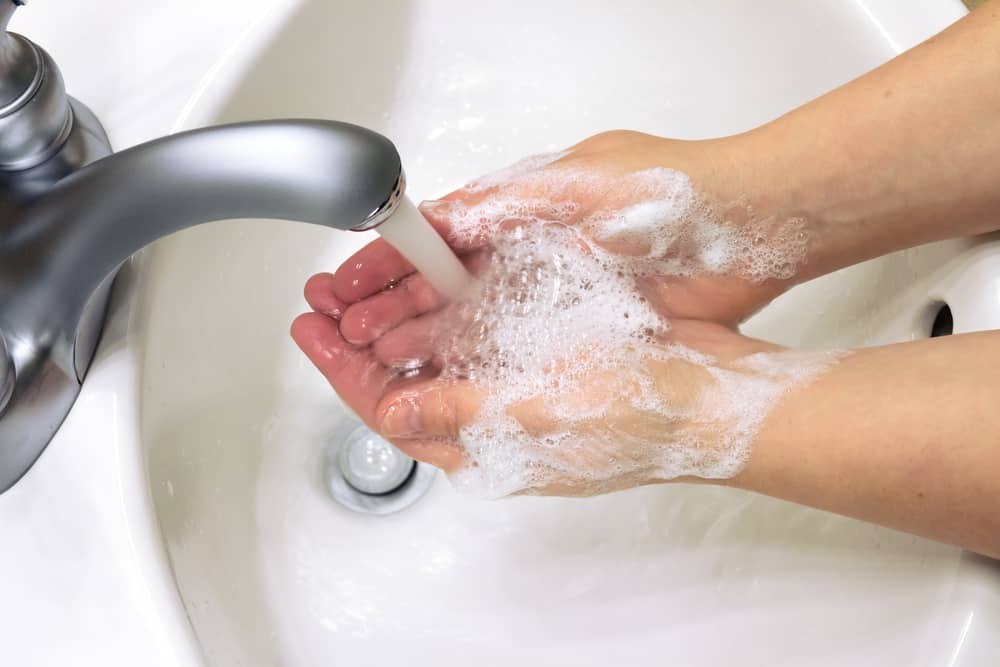
Grease, oil, and fats aren’t the only things that can create buildup in your pipes.
Certain types of chemicals and soap can, too.
When a chemical or soap reacts with mineral water, it can create what’s known as soap scum.
This is a scaly type of buildup that can thicken over time.
The more minerals that you have in your water, the more likely the buildup will increase faster.
Over enough time, the buildup will make it impossible for water to pass through the drain.
There are methods you can use to avoid soap scum.
You need to treat your water.
Without the presence of minerals, soap and chemicals won’t have anything to react with to create the buildup.
There are a ton of different filters that remove minerals from your water.
You can install one on the faucet of the kitchen sink if you only want to fix the problem there.
You can also install one to the pipe that feeds water into your home.
This choice ensures that all the water in your home has its minerals removed.
Soap scum won’t be a problem in any of the sinks, showers, or baths that you use.
3. Toothpaste Buildup
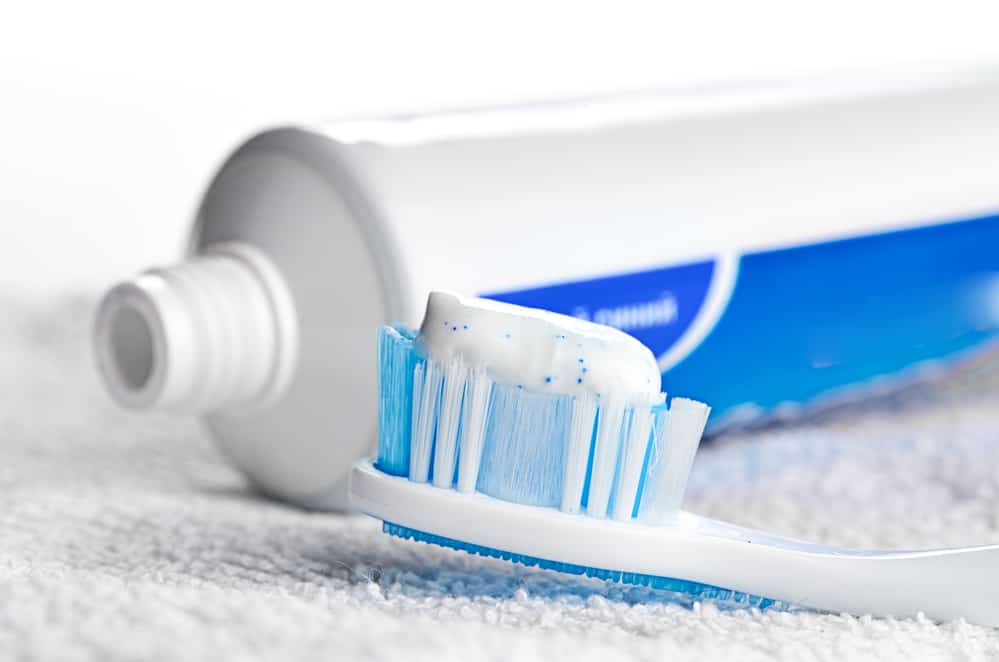
It’s common practice to spit toothpaste into a sink.
If you’ve been brushing your teeth at the kitchen sink, then this could be the reason that it isn’t draining.
Toothpaste becomes hard and thick over time.
It doesn’t easily wash down the drain.
Instead, it ends up sticking to the sides of the pipe.
After enough time, the toothpaste can create a buildup that blocks the pipe.
Water pools in the sink.
Removing toothpaste from the pipe isn’t easy.
Certain biodegradable cleaners may help, but since toothpaste is largely inorganic, it can only erode it so much.
Using a snake may help the problem.
It can pierce a hole through the buildup and allow water to pass through the hole.
A plumber can also use specialized tools to scrape away the buildup in the pipes.
In the future, you can prevent toothpaste buildup from keeping your kitchen sink draining by spitting it out in the trash.
4. Mis-Angled Pipes
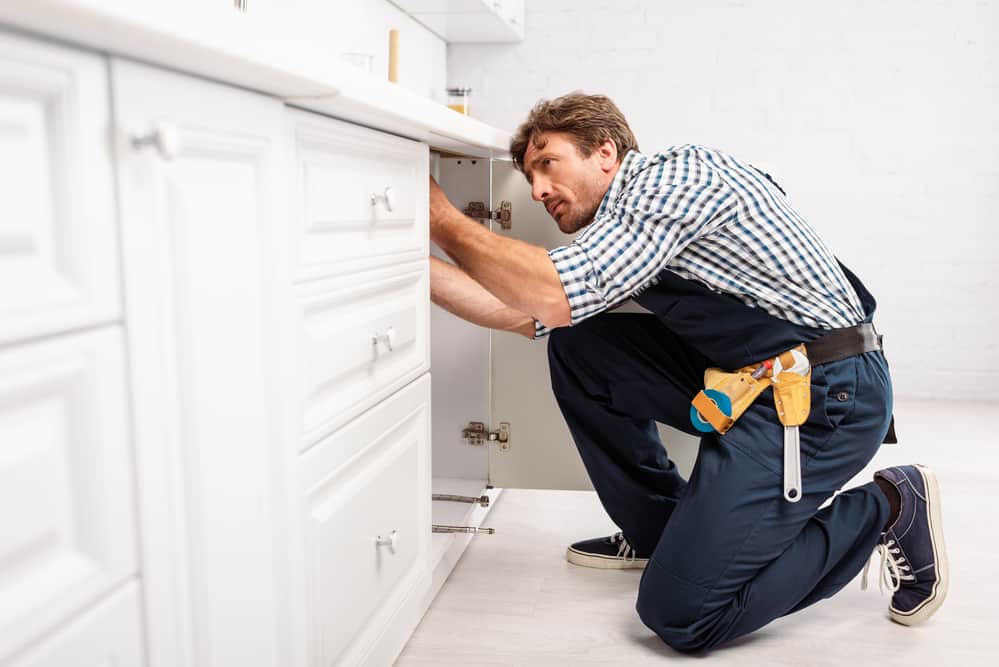
The installation of your pipes also plays a role in how well your kitchen sink drains.
One problem is if the pipes turn at too sharp of an angle.
This can make it difficult for water to pass through the pipe, especially if there’s food debris in the water, too.
The food can block the sharp angle until enough water pushes against it to free it.
In the meantime, your kitchen sink doesn’t drain.
Another issue with the improper installation of your pipes is if one pipe is higher than the other.
There are two drains in your kitchen sink.
One is at your sink where water falls down the pipe and heads for the wastewater pipe outside of your home.
The second drain is in your wall.
It takes the water from the kitchen and empties it down the sewer or wastewater pipe outside.
Proper installation requires that the first drain be higher than the second drain.
It helps the water roll down the pipe rather than up the pipe.
If the second drain is higher than the first drain, then enough pressure needs to be present to push the water against gravity.
Read more : Polished vs. Unpolished Porcelain Tiles: Which is Preferred?
Not all homes can supply this pressure.
As a result, the water can’t make it up the slope.
It backs up and fills your kitchen sink instead.
Fixing this problem is easy.
It requires a change in pipes.
The first drain needs a shorter pipe, so it’s higher than the second pipe.
Whenever you use the kitchen sink in the future, the water will slide down the pipe without any problems.
Fixing the sharp angles is possible, too.
You need to use different pipes to make the path to the outdoor pipes as smooth as possible.
Gradual sloping is acceptable and preferred.
5. Malfunctioning Garbage Disposal
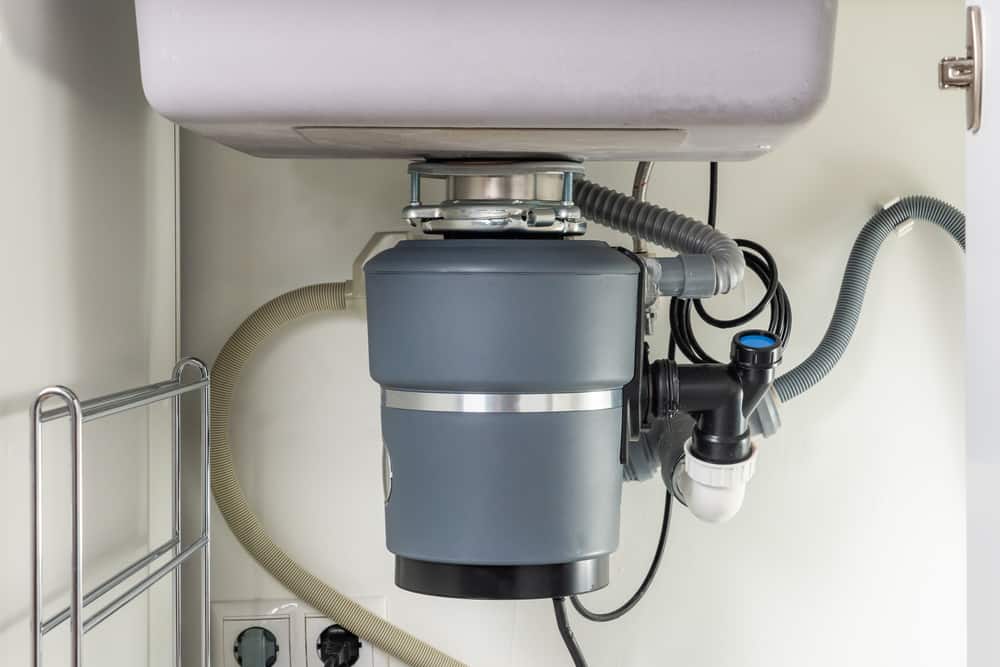
If your kitchen sink uses a garbage disposal, then it could be to blame for drainage problems.
The purpose of garbage disposal is to prevent clogs in the plumbing.
It chews up food and other debris and turns them into small pieces that flow easily through the pipes.
Because it uses a motor and various parts, it’s inevitable that the disposal will break down eventually.
When that happens, you’ll notice that the kitchen sink doesn’t drain.
There are a few things that can go wrong with the disposal to cause this problem.
The first is that the garbage disposal may have a stuck flywheel.
The flywheel is responsible for cutting up the food.
If it’s broken, stuck, or clogged, then it can’t cut down the debris.
A blockage forms and the water can’t pass through it.
Another reason is that the garbage disposal is full.
If you haven’t run the disposal in some time, then it may be full of food and garbage.
Running the disposal while running cool water through it can clear it up and allow water to pass.
Sometimes the size of the disposal can also impact how high or low the drain is.
It may be responsible for the pipe being lower than the drain in the wall.
Fixing this problem can be tricky since you can only raise the disposal so far.
You may need a plumber to lower the drain in the wall instead.
Keeping your garbage disposal in great condition can prevent blockages that keep the sink from draining.
6. Not Vented
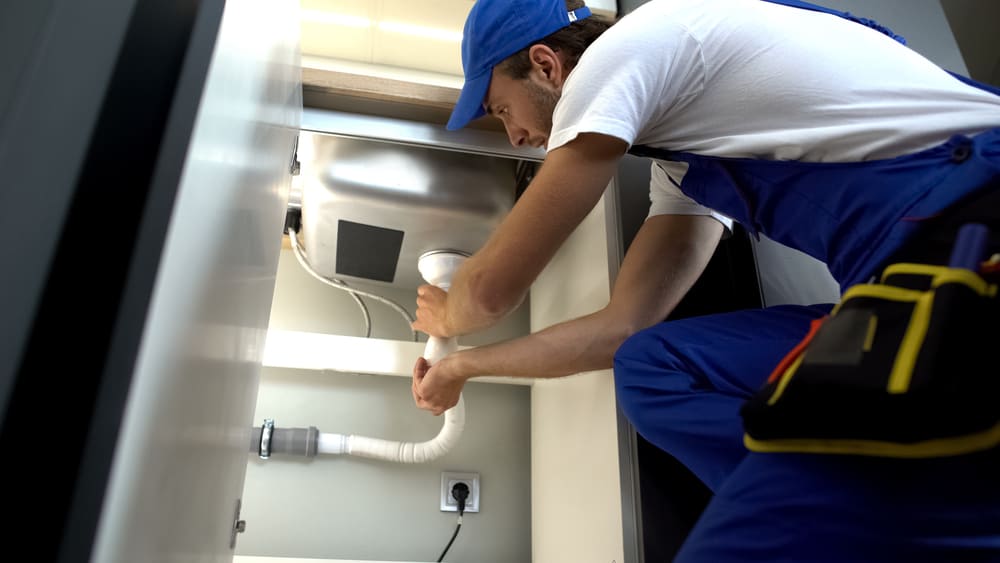
You may notice pipes on your roof and wonder what purpose they serve.
They actually help your plumbing.
They’re vents that deliver air to your plumbing.
The air supplies enough pressure to the plumbing to help water pass through it.
If your kitchen sink isn’t draining, then your vents may be to blame.
If a vent has a clog or blockage, then it can’t deliver air to the pipes.
Your plumbing system may not even have a vent.
Storms can damage vents and the previous owners may have taken them down without realizing what they were.
Because vents can be difficult to reach, you should have a plumber inspect them for you.
Cleaning them out can restore air pressure to your pipes and help your kitchen sink drain.
It also helps to know the various vents in the plumbing system to give your plumber accurate information.
The four main types of vents include:
- True vent
- Common vent
- Re-vent pipe or auxiliary vent
- Air admittance valve
The true vent is a vertical pipe that runs out through your roof.
It brings in the air from outside and delivers it to the rest of the plumbing system.
A common vent connects two different fixtures together.
It uses a sanitary cross to do so.
A re-vent pipe or an auxiliary vent attaches to a plumbing fixture.
It connects the fixture to the true vent on the roof.
Finally, an air admittance valve (AAV) controls sewer odor.
The valve opens when wastewater drains.
It allows air inside of the pipes to keep sewer gases from entering the home.
Not everyone has an AAV in their plumbing system.
Certain counties don’t allow them while others require them.
If anything goes wrong with any of the vents above, then it could affect how well your kitchen sink drains.
7. Tree Root Damage
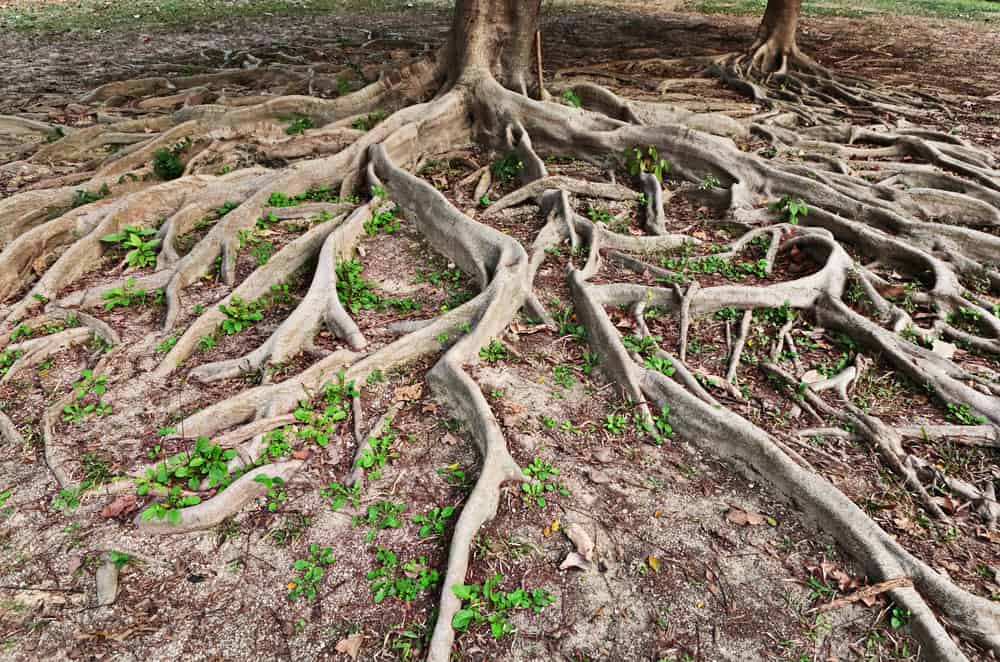
One final reason your kitchen sink won’t drain even though it’s not clogged is the presence of a tree root.
If you have trees in your yard, then your plumbing is always at risk.
Tree roots grow underground and extend into massive networks.
Unfortunately, they don’t know to stay away from pipes.
As a result, tree roots can pierce through pipes in the ground.
They can block anything that tries to pass through them.
They can also cause the pipe to leak into the soil.
A tree root affects your kitchen sink’s drainage by preventing the flow of water.
In some instances, it may allow the water to leak through the ground.
Read more : Five Smart Ways To Add A Sprayer To Your Kitchen Faucet
In most, it will block the pipe entirely and block the movement of water.
Fixing this problem is easy once it’s discovered.
It’s finding the problem that’s the hardest part.
The yard will need digging to locate the pipe and tree root.
Once it’s found, a plumber can cut away the root and replace the pipe.
The kitchen sink can drain without any problems again.
What To Do When The Kitchen Sink Won’t Drain

If the kitchen sink stops draining, then you need to stop water from entering your home immediately.
Allowing water to access your home could cause the sink to back up.
Before you know it, water could be flooding your home.
It may even cause other drains in the house to back up.
Your toilet could back up and bring sewer water into the home.
The first precaution to take is to turn off the main water supply to your home.
Then follow these steps to figure out the reason behind the problem and fix it.
Step 1: Investigate The Sink Stopper
If your kitchen has a sink stopper, then this is the first thing that you need to investigate.
The sink stopper collects everything.
Removing it can pull out hair, food debris, and gunk from the drain.
If you’re lucky, then that might solve the problem by itself.
Clean out the stopper and put it back in the sink.
Some stoppers need a little extra work to remove.
They attach to the sink through a pivot rod.
The pivot rod is usually below the basin and against the pipe.
You can remove the rod with your fingers or with some pliers if it’s stuck.
Removing the rod allows you to pull up the stopper.
If the water doesn’t drain, then it’s time to move on to the next step.
Step 2: Attempt To Plunge The Drain
Before you plunge the drain, you need to fill the basin with at least two inches of water.
Plungers need water to help create enough pressure.
Then use a clean plunger and place it over the drain’s opening.
Create a tight seal by pressing down on the plunger.
Then plunge the drain as if you were plunging the toilet.
The presence of water and pressure can dislodge anything that may be blocking the pipe.
With enough effort, the drain will clear, and the sink will drain again.
If not, then you may need a professional tool to figure out the problem.
Step 3: Snake The Pipe
Sometimes a plunger can’t apply enough pressure to a clog or blockage deep within the pipe.
A snake can reach further.
A snake is a cable that can run through a pipe.
Its tip is sharp and can pierce through organic material to create a hole.
Some snakes have a claw on the end of them.
The claw can grab onto something that’s causing a clog or blockage and pull it away.
Slowly push the snake through the drain.
Keep pushing the snake through until you’re unable to move any further.
At this point, you have found the blockage.
Apply some pressure to create a hole through it with the snake.
The water will pass through the hole and the sink will drain.
If you don’t find anything, then you may want to try a snake with a camera on it.
The camera allows you to inspect the pipe.
It can show you if you have any soap scum, damaged pipes, or clogs throughout the plumbing.
As a bonus tip, use a cloth to extract the snake from the pipe.
Step 4: Use Natural Drain Cleaners
While you should stay away from using harsh chemicals to tackle sediment and soap scum buildup, certain natural drain cleaners are fine to use.
These drain cleaners use biodegrading bacteria to eat away organic material.
They’ll leave your pipes alone and focus on clearing the scum and food that is stuck in your pipes.
If you want to stay away from bacteria, then you can always create your own natural drain cleaner.
Mixing dish soap and hot water together can help clean out some of the soap scum.
Hot water makes soap scum lose its adhesion to the pipe’s walls.
The standard mixture of baking soda and vinegar can also help.
Mixing the two together can remove grease, oil, and fats that are clinging to your pipes.
Vinegar can also cut down on odors.
Natural drain cleaners take time to work because they’re inherently gentle.
You may need to use them a few times to notice any difference.
Conclusion
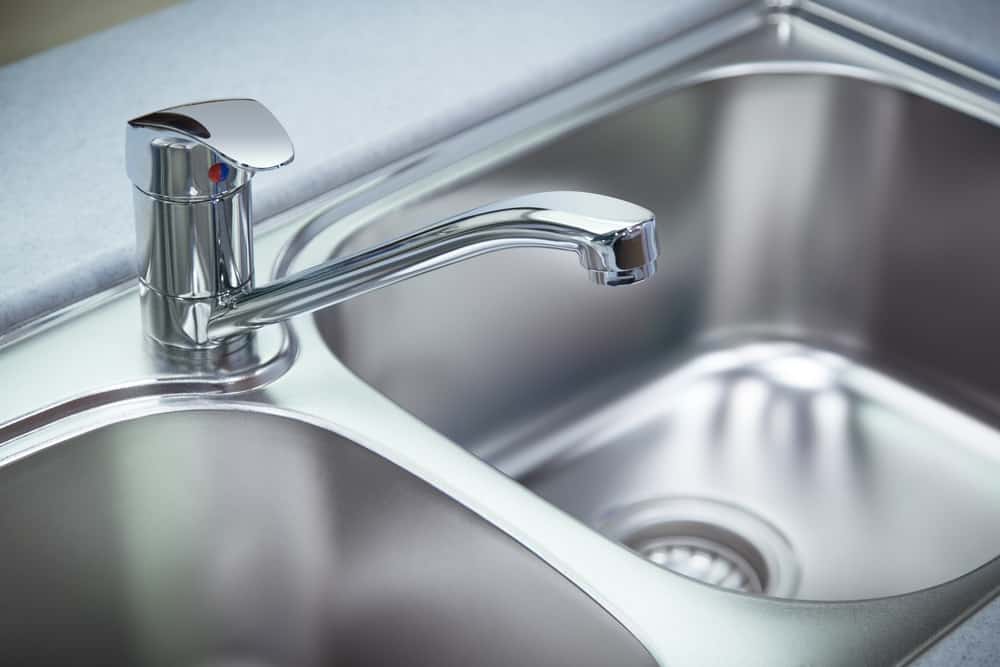
There are a few different reasons your kitchen sink won’t drain even if it’s not clogged.
Anything from buildup from certain foods to problems with your garbage disposal can affect the sink’s draining ability.
Figuring out the problem can help you choose the appropriate way to fix it.
The next time your kitchen sink doesn’t drain, consider these reasons and apply the respective fix to make it drain again.
Source: https://gardencourte.com
Categories: Kitchens

